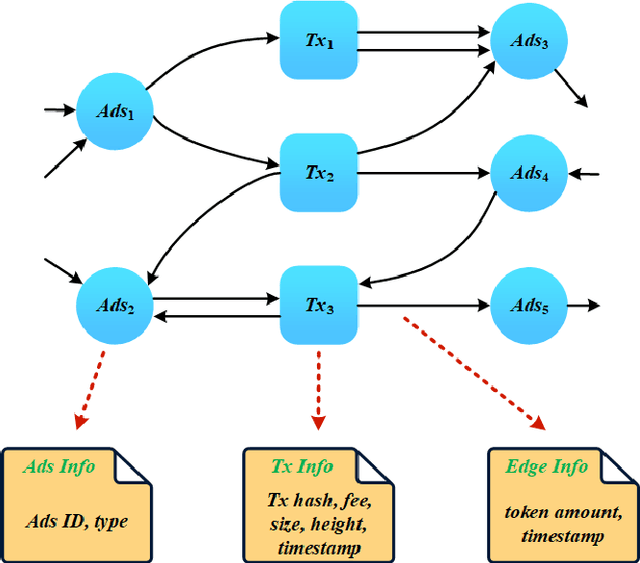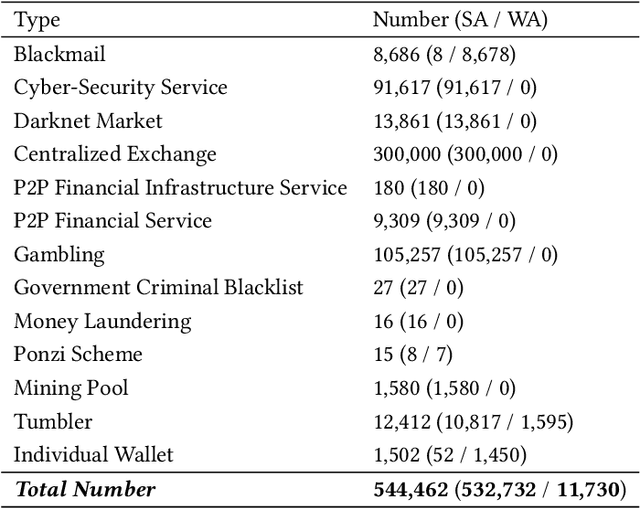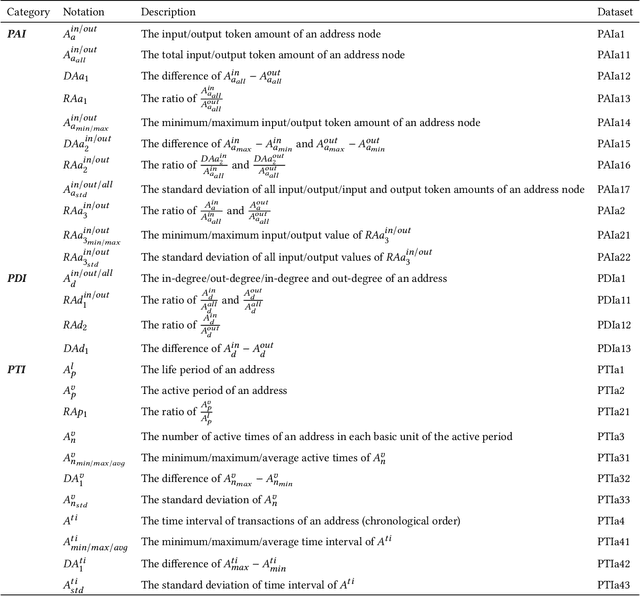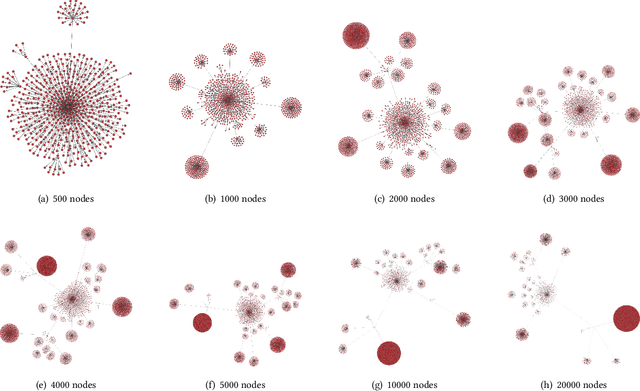Yuexin Xiang
Large Language Models for Cryptocurrency Transaction Analysis: A Bitcoin Case Study
Jan 30, 2025



Abstract:Cryptocurrencies are widely used, yet current methods for analyzing transactions heavily rely on opaque, black-box models. These lack interpretability and adaptability, failing to effectively capture behavioral patterns. Many researchers, including us, believe that Large Language Models (LLMs) could bridge this gap due to their robust reasoning abilities for complex tasks. In this paper, we test this hypothesis by applying LLMs to real-world cryptocurrency transaction graphs, specifically within the Bitcoin network. We introduce a three-tiered framework to assess LLM capabilities: foundational metrics, characteristic overview, and contextual interpretation. This includes a new, human-readable graph representation format, LLM4TG, and a connectivity-enhanced sampling algorithm, CETraS, which simplifies larger transaction graphs. Experimental results show that LLMs excel at foundational metrics and offer detailed characteristic overviews. Their effectiveness in contextual interpretation suggests they can provide useful explanations of transaction behaviors, even with limited labeled data.
BABD: A Bitcoin Address Behavior Dataset for Address Behavior Pattern Analysis
Apr 21, 2022



Abstract:Cryptocurrencies are no longer just the preferred option for cybercriminal activities on darknets, due to the increasing adoption in mainstream applications. This is partly due to the transparency associated with the underpinning ledgers, where any individual can access the record of a transaction record on the public ledger. In this paper, we build a dataset comprising Bitcoin transactions between 12 July 2019 and 26 May 2021. This dataset (hereafter referred to as BABD-13) contains 13 types of Bitcoin addresses, 5 categories of indicators with 148 features, and 544,462 labeled data. We then use our proposed dataset on common machine learning models, namely: k-nearest neighbors algorithm, decision tree, random forest, multilayer perceptron, and XGBoost. The results show that the accuracy rates of these machine learning models on our proposed dataset are between 93.24% and 96.71%. We also analyze the proposed features and their relationships from the experiments, and propose a k-hop subgraph generation algorithm to extract a k-hop subgraph from the entire Bitcoin transaction graph constructed by the directed heterogeneous multigraph starting from a specific Bitcoin address node (e.g., a known transaction associated with a criminal investigation).
A Lightweight Privacy-Preserving Scheme Using Label-based Pixel Block Mixing for Image Classification in Deep Learning
May 19, 2021



Abstract:To ensure the privacy of sensitive data used in the training of deep learning models, a number of privacy-preserving methods have been designed by the research community. However, existing schemes are generally designed to work with textual data, or are not efficient when a large number of images is used for training. Hence, in this paper we propose a lightweight and efficient approach to preserve image privacy while maintaining the availability of the training set. Specifically, we design the pixel block mixing algorithm for image classification privacy preservation in deep learning. To evaluate its utility, we use the mixed training set to train the ResNet50, VGG16, InceptionV3 and DenseNet121 models on the WIKI dataset and the CNBC face dataset. Experimental findings on the testing set show that our scheme preserves image privacy while maintaining the availability of the training set in the deep learning models. Additionally, the experimental results demonstrate that we achieve good performance for the VGG16 model on the WIKI dataset and both ResNet50 and DenseNet121 on the CNBC dataset. The pixel block algorithm achieves fairly high efficiency in the mixing of the images, and it is computationally challenging for the attackers to restore the mixed training set to the original training set. Moreover, data augmentation can be applied to the mixed training set to improve the training's effectiveness.
Efficiently Constructing Adversarial Examples by Feature Watermarking
Aug 14, 2020



Abstract:With the increasing attentions of deep learning models, attacks are also upcoming for such models. For example, an attacker may carefully construct images in specific ways (also referred to as adversarial examples) aiming to mislead the deep learning models to output incorrect classification results. Similarly, many efforts are proposed to detect and mitigate adversarial examples, usually for certain dedicated attacks. In this paper, we propose a novel digital watermark based method to generate adversarial examples for deep learning models. Specifically, partial main features of the watermark image are embedded into the host image invisibly, aiming to tamper and damage the recognition capabilities of the deep learning models. We devise an efficient mechanism to select host images and watermark images, and utilize the improved discrete wavelet transform (DWT) based Patchwork watermarking algorithm and the modified discrete cosine transform (DCT) based Patchwork watermarking algorithm. The experimental results showed that our scheme is able to generate a large number of adversarial examples efficiently. In addition, we find that using the extracted features of the image as the watermark images, can increase the success rate of an attack under certain conditions with minimal changes to the host image. To ensure repeatability, reproducibility, and code sharing, the source code is available on GitHub
 Add to Chrome
Add to Chrome Add to Firefox
Add to Firefox Add to Edge
Add to Edge